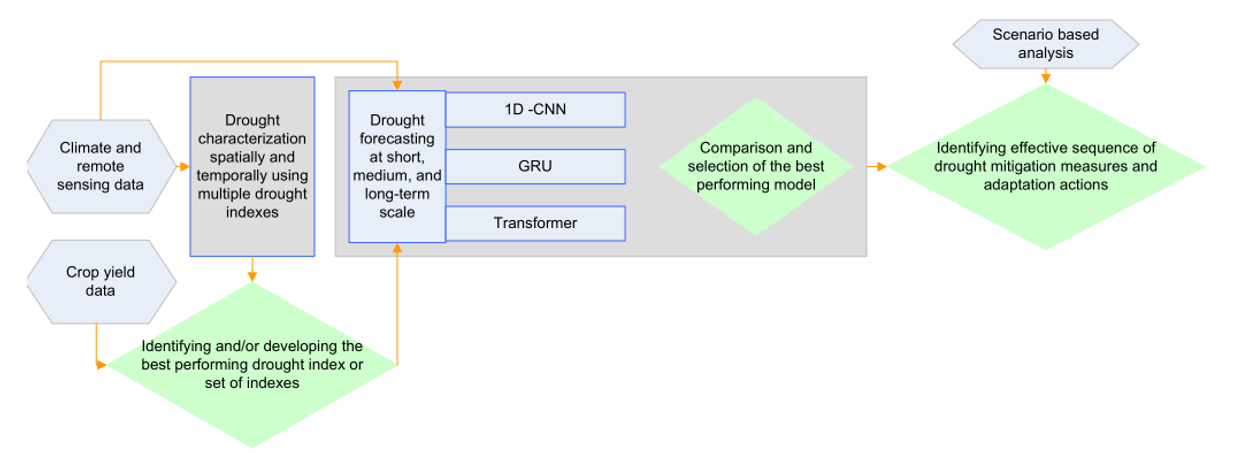E4D Fellow: Tamirat Haile Dessalegn
Drought Characterization and Forecast in The Horn of Africa (Ethiopia, Kenya. and Somalia)
Project duration: 2023-2026
Supervisor at ETH Zurich: Prof. Paolo Burlando (Chair of Hydrology and Water Resources Management)
Collaborators: Prof. Jan Dirk Wegner, University of Zurich
Partner institutions: external page Adama Science and Technology University, external page Arba Minch University, external page University of Zurich
Project Description
The Horn of Africa is one of the world's most environmentally fragile places. Most people's economies in the region rely on rainfed agriculture and livestock farming, which are highly vulnerable to climate change and extreme hydrological events such as droughts. The climate in the Horn of Africa is predominantly arid and semiarid, with variability being its key feature. As a result, drought frequency, duration, and intensity are significant in the region. Loss of human lives and of a large number of livestock, famine, lack of water, food insecurity, mass migration, and sizeable drought-driven refugees are the main manifestations of social and environmental impacts caused by droughts in the region. In addition to the apparent increase in frequency and intensity of droughts, political instability, population growth, poverty, and weak institutional capacity have contributed to the region's vulnerability to droughts, as people are poorly equipped to cope with the harmful impacts of droughts.
Governments, stakeholders, and societies in the Horn of Africa emphasize drought crisis management more than drought forecasting and mitigation planning in advance of an event. Moreover, early drought warning, mitigation of their impacts and adaptation strategies are rarely implemented in the region. Therefore, enhancing drought mitigation and adaptation capacities rather than placing more emphasis on crisis management alone is essential for the Horn of Africa to cope with droughts sustainably. To this end, understanding historic droughts condition and forecasting drought in the region, which have not been adequately explored, are the key and foremost research areas that could be possible nowadays due to the availability of remote sensing, reanalysis data, land surface models, gauged data, and reliable drought forecasting models.
The first main goal of this research project is to characterize historical droughts in space and time across Ethiopia, Kenya, and Somalia over the long term and to identify and/or develop the best drought index or set of indices or compound index that thoroughly and comprehensively characterizes droughts.
The second goal of the proposed project is to provide a reliable, robust, and operational drought forecast model across the Horn of Africa at short (weekly to monthly), medium (one month to four months), and long-term (longer than four months) lead times. To this purpose, data-driven techniques based on various deep-learning models will be explored (see Figure 1).

Forecasts from these models will be compared using performance metrics, in order to identify one or more suitable models, which will be used to provide support to stakeholders in anticipating droughts and mitigating their impact.
In this respect the project aims to provide a web-based tool, the Drought Forecast and Management Tool (DFMT), which allows linking forecasts with an effective sequence of mitigation actions. The DFMT will thus generate a legacy of project results, also making the developed knowledge accessible and implementable.
The proposed project generates knowledge that supports federal and regional government sectors, which could introduce new policies to cope with drought impacts. The project also contributes to achieving several sustainable development goals by strengthening institutions and expertise in the Horn of Africa and directly impacting the concerned population.